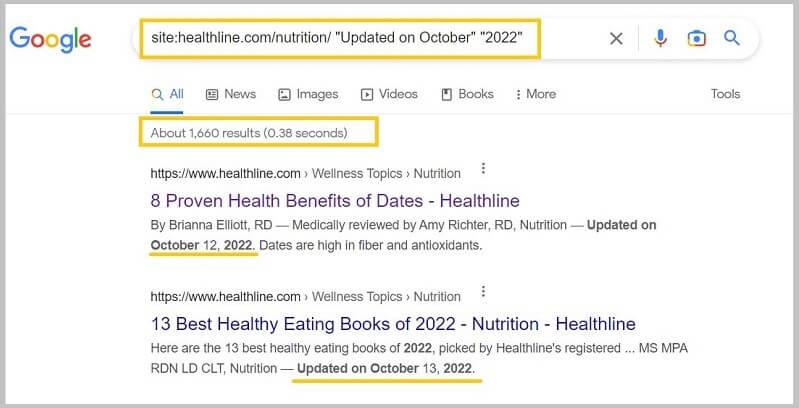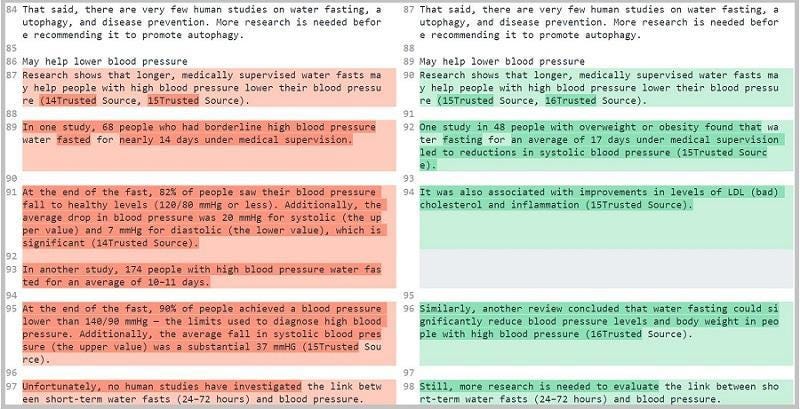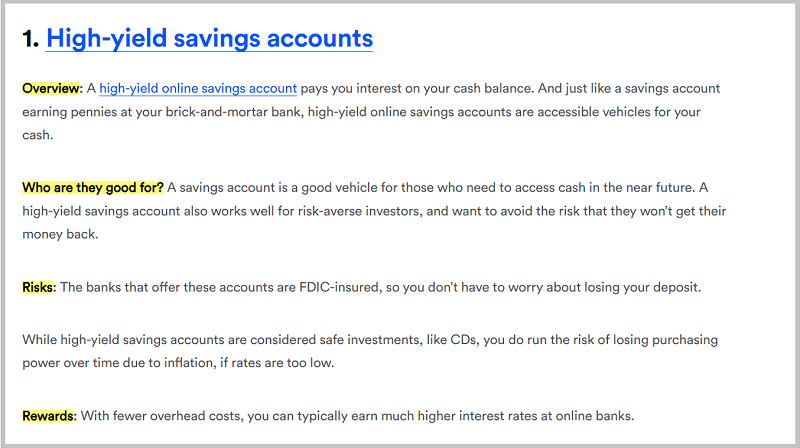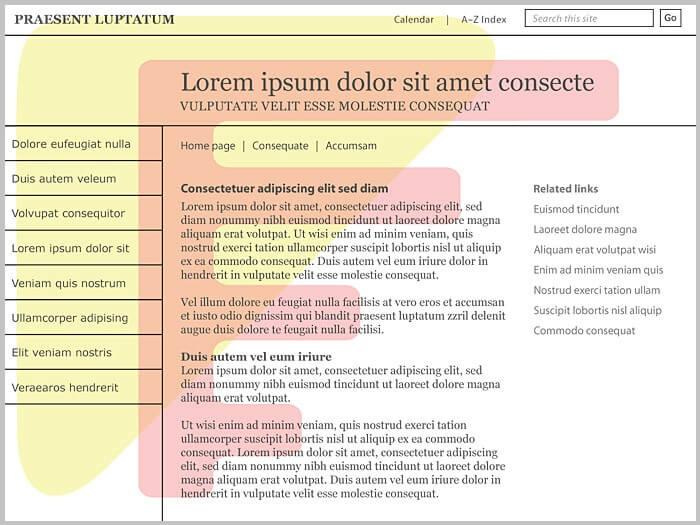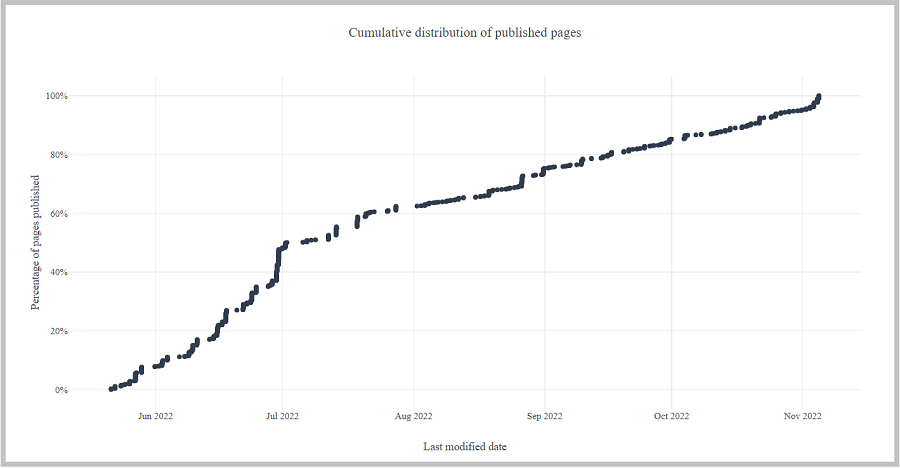#077 Content Marketing VIP Newsletter
The next time you’re going to update content, think more about content freshness and less about adding additional word counts.
💡 This newsletter is sponsored by Marketing Examined, a newsletter guaranteed to optimize your marketing performance.
5-minute reads that make you a better marketer, scale your startup, and are straight to the point.
👉 Subscribe to Marketing Examined (it’s free)
🎯 Actionable Insights
💡 1. Content update: Is it only about adding more words?
Healthline Media updated 1,660 page URLs only in the last month (Oct 2022).
And this is only for one subfolder of Healthline → https://www.healthline.(com)/nutrition/
I've compared multiple articles on different topics to understand the content difference between the two versions (older version vs updated version).
Here are some common types of changes I’ve found in content updates:
Including new research/statistics on the topic
Adding a new paragraph in the introduction
Removing outdated information
Adding content on the same topic but with the latest research, angle, & updates.
Updating the facts with the latest information
Changing unit forms such as; g → grams, mL → ml, etc.
In many content updates, there is hardly an addition of 300 words of content.
But almost every change/update on an article has one goal — to keep the content fresh and updated with the latest studies and research.
Results?
Healthline's subfolder of nutrition (https://www.healthline.(com)/nutrition) ranks for almost 464878 keywords🤯, a/c to Sistrix visibility analysis.
And one of the reasons for their SEO growth comes from the content update.
Here’s what Anthony Machi of Healthline Media says about this:
“Our content model has now shifted to half and half (50% on creating new content and 50% on updating existing pages) to keep the content fresh and make sure that our content integrity stays up to date…
We've naturally shifted towards focusing on freshness.”
Key takeaways:
First, your SEO strategy should evolve to keep the existing content fresh and updated (when you’ve written about most of the main topics in your niche).
Reasons:
It is comparatively easy to get to the first-page position for pages already ranking on the 2nd or 3rd page.
Content freshness is a confirmed ranking factor.
Second, Don’t measure content updates by ‘word count gain.’ Adding 300 words of new content just for the sake of content updates is not going to help you much.
The goal should be to keep the pages fresh and relevant with the latest information.
This may include minor changes such as:
writing about new facts and insights from research
covering new/uncovered and related questions on the same topic
adding new subtopics based on GSC queries
removing data or statistics that do not have trusted source
Updating metadata, etc.
So, the next time you’re going to update content, think more about content freshness and less about adding additional word counts.
Liked this? Please consider sharing the newsletter with others.
💬 Bite-sized Insights
💡 1. Structuring your blog content the right way
Always use sub-headings or bullets to make the content easy to read.
Example from bankrate.(com):
Blog topic: Best Investments In 2022
Content structure: each investment type is categorized by
Investment Overview
Risks
Rewards
These minor changes in the content structure make the article easy to digest.
Most of all, readers can now quickly pull out the important information without reading line by line.
💡 2. Information architecture to improve content readability and scannability
Information architecture helps you organize your content strategically so readers can easily find important information.
However, the human eye follows a certain pattern while scanning web pages.
Why it matters
Optimizing your page structure, link or CTA placement according to eye-tracking research will drive more clicks and users' attention and improve dwell time.
The research suggests putting your important information in the 'F' pattern or the 'golden triangle' (check the image below).
Key takeaways:
“…So if you have important content near the bottom of long pages, consider creating a page content menu near the top of the page.
Write your major titles and navigation elements so that they fall within the “golden triangle” (shown in yellow) or the “F pattern” of reader visual scanning (shown in red).” – Search Engine Optimization | Web Style Guide 3
🗓️ Learning Resources and Tools
💡 1. Learn programmatic SEO from scratch (Free course)
Ever wanted to explore programmatic SEO to scale your content creation and increase organic traffic?
This week, Allison Seboldt has launched her programmatic SEO course (1 hour + video content) for free.
This course has covered everything you need to plan your first programmatic SEO strategy.
Here’s the course outline:
👉 Enroll in this programmatic SEO course (by Allison Seboldt)
💡 2. Analyze content publishing pattern of your SEO competitors
An XML sitemap is a great place to understand the content updating pattern of any website.
For example, studying the sitemap will give you an idea of content publishing/updating frequency and URL structure.
Fortunately, I’ve found this tool (Analyze XML Sitemaps – advertools) that helps you visualize a website's content and publishing pattern.
Here’s an example:
(% of pages published/modified vs date)
Here’s how to use it:
Find the sitemap URL of a website that you want to analyze
Paste the URL in the tool and get the data in a few seconds
👉 Start analyzing content patterns using Advertools (by Elias Dabbas)
📹 On my mind
Not only content creation but curating content and organizing it for ease of accessibility is becoming increasingly important.
This is true at:
Site-level (e.g. a website with 1000+ articles struggles to make every article accessible for users in a few clicks),
Web-level (e.g. a beginner who wants to learn about a topic will get overwhelmed by the amount of time available on the web).
Some great examples are:
Learning SEO (curated the best free SEO resources and organized them for a beginner who wants to start learning SEO)
SEOtoolbelt (Organize all-important free and paid SEO tools in one place. Use filters and get the tool for your SEO task)
Find opportunities in content curation and help users by organizing them in the best way possible. It can be a newsletter, blog, SaaS, etc.



